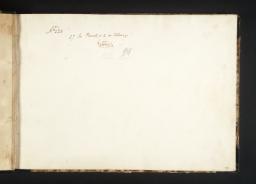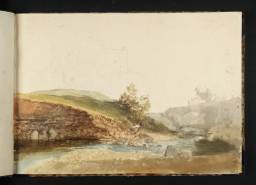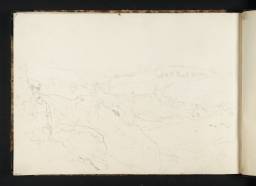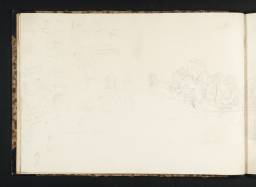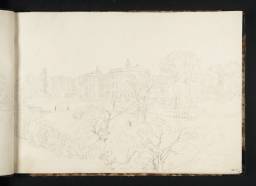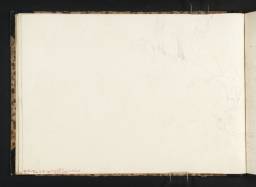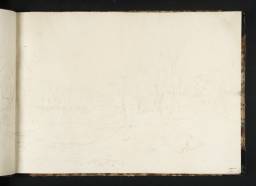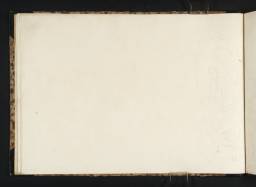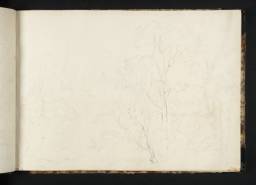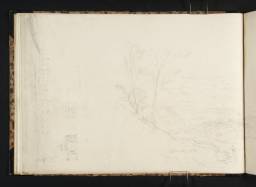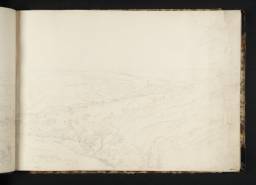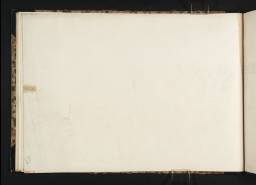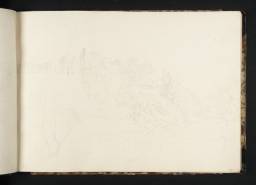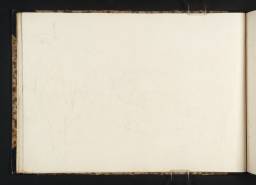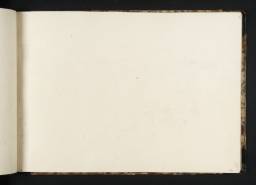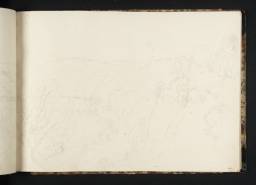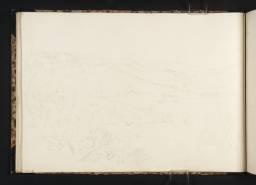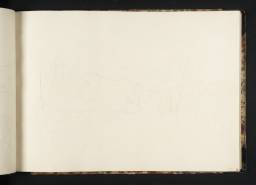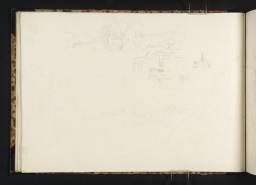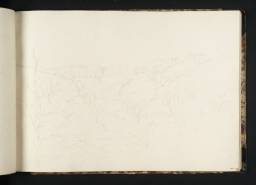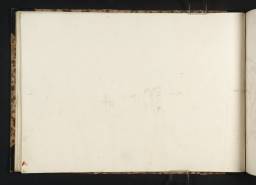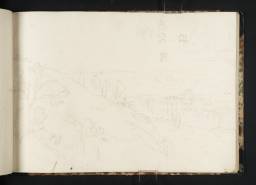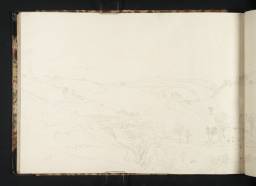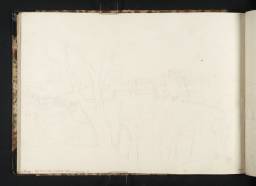Turner Bequest CLVI 1–32a
Sketchbook bound in boards, covered in brown and grey mottled paper half-bound over black leather spine and corners; seven ruled gilt bands on spine
32 leaves and pastedowns of white wove Whatman paper, with a modern free endpaper inserted at the back (see concordance below); various sheets watermarked ‘J Whatman | 1816’; page size 232 x 328 mm
Inscribed by Turner in ink ‘115 Raby’ on label on the spine (D40725)
Numbered 226 as part of the Turner Schedule in 1854 and endorsed by the Executors of the Turner Bequest on folio 1 recto (D12262)
32 leaves and pastedowns of white wove Whatman paper, with a modern free endpaper inserted at the back (see concordance below); various sheets watermarked ‘J Whatman | 1816’; page size 232 x 328 mm
Inscribed by Turner in ink ‘115 Raby’ on label on the spine (D40725)
Numbered 226 as part of the Turner Schedule in 1854 and endorsed by the Executors of the Turner Bequest on folio 1 recto (D12262)
Accepted by the nation as part of the Turner Bequest 1856
Exhibition history
References
This sketchbook largely comprises studies of some of the country houses of north-east England, made on Turner’s autumn 1817 visit to the area after his return from the Continent. He was using the smaller Durham, North shore sketchbook at the same time (Tate; Turner Bequest CLVII). The houses, their owners and the resulting commissioned works are considered in detail in the introduction to the tour. There are no dates inscribed in the Raby book, but the presence of sketches for a painting exhibited in 1818 and Turner’s own description of his movements at this time, as explained below, preclude any doubt.
The exact order in which the various sites were visited is unclear, but in a letter written later in 1817 Turner states that he had initially been staying at Raby before travelling ‘away to the north’1 with Lord Strathmore. As discussed in the technical notes and set out in the concordance, the book is not in its original order, having been dismembered in the nineteenth century in order to display selected pages before being rebound in 1935. The longest run of leaves which were definitely contiguous in as originally bound is only six, and while some other juxtapositions seem plausible, two halves of one double-page drawing are now bound in different parts of the book, and other juxtapositions may well be incorrect. Finberg’s 1909 foliation is scrambled because of the rebinding, and for brevity the page ranges given below cite only the first and last folio numbers with their corresponding Tate and Turner Bequest numbers, and the reader is referred to the concordance for the intervening works.
Assuming the sketchbook is in anything like its original order, the second half as now foliated was probably used first, working inwards, and is largely given over to Raby Castle, Lord Darlington’s country seat south-west of Bishop Auckland, from folio 17 recto (D12298; CLVI 22a) to folio 32 recto (D12309; CLVI 28). Gerald Wilkinson has praised Turner’s ‘thoroughness’ in this sequence at Raby, depicting the castle from many angles and from near and far,2 and James Hamilton has suggested that the range of this material and associated drawings of huntsmen and dogs shows ‘how integrated and organised was his mind and how controlled his energies’.3 Turner still had his Itinerary Rhine Tour sketchbook (Tate; Turner Bequest CLIX) with him and used it for studies of deer, dogs and horsemen at Raby to supplement those in this sketchbook; there is a checklist of these sketches in the introduction to the present tour, but they are catalogued in full in the context of the 1817 Continental tour.
In the first half of the Raby book are views of Streatlam Castle, near Raby, on folios 3 verso (D12313; CLVI 30a) to 6 recto (D12264; CLVI 3), and, well to the north, Gibside, near Gateshead, on folios 6 verso (D40723; verso of CLVI 3) to 11 verso (D12273; CLVI 8a). Hylton Castle, near Sunderland, follows, overlapping with Gibside on folio 11 verso and running on to folio 13 recto (D12276; CLVI 10). Streatlam, Gibside and Hylton all belonged to Lord Strathmore.
There are also a few studies of Auckland Castle, the residence of the Bishops of Durham at Bishop Auckland, on folios 15 verso–16 recto (D12294, D12307; CLVI 20, 27) and 26 verso–27 verso (D12304–D12306; CLVI 25a–26, 26a). In relation to the Gibside views, Emma House has observed how the sketchbook’s ‘elongated pages’ gave Turner ‘broad sheets that were perfect for sketching panoramic landscapes’;4 various drawings of Raby, Streatlam, and Bishop Auckland also make use of two pages.
There is some cross-over in subject matter in the contemporary Durham, North Shore sketchbook, which includes views of Bishop Auckland, and of Witton Castle, which is represented in the present book by a study of its lodge on folio 2 recto (D12263). An unidentified view of a valley with farm buildings and a bridge on folios 14 verso–15 recto here (D12311, D40764; CLVI 29 and the reverse of CLVI 20) is complemented by a page of studies of some of the individual structures in the Durham, North Shore book (D12445; CLVII 92). The only other unidentified subject is the valley shown on folio 3 recto (D12312; CLVI 30), which appears to be similar country to that shown on folios 14 verso–15 recto.
Technical notes
How to cite
Matthew Imms, ‘Raby sketchbook 1817’, sketchbook, February 2010, in David Blayney Brown (ed.), J.M.W. Turner: Sketchbooks, Drawings and Watercolours, Tate Research Publication, December 2012, https://www

